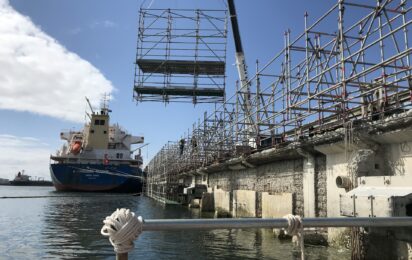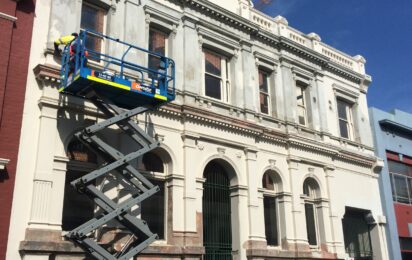The Surrey Hills water tower, located 20 kilometres east of the Melbourne CBD, is a local landmark with significant heritage value. Duratec was ask to remediate the structure, thereby extending its life by up to 25 years.
It may not be the first kind of structure that comes to mind when you hear the term ‘heritage’, however, water infrastructure, e.g. reservoirs, pipelines and water towers, plays a critical role in the way we function as a society. Trace back the history of any town and you’ll find water infrastructure is an important part of its foundation.
The backstory
Built in 1929, the Surrey Hills water tower sits on a hill near the intersection of Elgar and Canterbury roads, about 20 kilometres from the Melbourne CBD. Although the tower was decommissioned some years ago, it has been recognised for its heritage by Whitehorse City Council, which, along with custodian Yarra Valley Water, is dedicated to it preservation.
As with all concrete infrastructure, the tower – which looks a bit like the leaning tower of Pisa (without the leaning part, thankfully) – is regularly subject to scheduled maintenance inspections. It was during one of these inspections that concrete degradation to some of the tower’s aesthetic features was observed. As a short-term solution, Yarra Valley Water restricted site access to essential personnel only and installed netting to prevent spalling concrete from falling to the ground. In late 2021, Duratec was engaged to rehabilitate the tower and restore it to its former glory.
The scope
- The scope of works included:
- Installation of custom-designed scaffolding
- Installation of electric materials hoist
- Encapsulation of tower
- Repair and replacement of concrete
- Remediation of corroded reinforcement
- Application of anti-carbonation coating to slow down future corrosion
- Removal of inactive cable tray
- Abrasive blasting to remove rust from external access ladder and application of protective coating
The works
The first step was the installation of a custom-designed scaffold, which provided working platforms at six levels around the tower. It also allowed specialists to get closer to the tower and make a better assessment of the degradation.
An electric materials hoist was also installed to enable the safe and efficient delivery of materials to all six levels. The tower was then encapsulated to contain dust and reduce the risk of objects falling from height.
Upon commencing remediation works, the Duratec team discovered that some of the locations previously identified for repair were not accurate. There were also more areas of degradation than originally thought and the extent of the damage had been underestimated.
The scope of works therefore changed slightly as more extensive degradation was revealed. Since the scaffold was already erected, the client took the opportunity to request further works, such as the removal of a redundant cable tray.
A collaborative approach
Duratec site engineer, Nathan Chavez, worked on the project from start to finish. For him, a highlight was the way the team worked together to devise repair methodologies and come up with ways to carry out repairs more efficiently.
“Collaboration with both the client and other service providers, such as scaffold expert Scope Australia, made the job enjoyable and easier to navigate,” he said.
“If we ever needed access to a specific part of the tower, Scope would find a way to adjust the scaffold, allowing us to get to an otherwise hard-to-access area.”
Once concrete repairs and steel reinforcement remediation had taken place, Duratec was tasked with the abrasive blasting and recoating of an external access ladder. The ladder had been decommissioned so this work was purely for aesthetic reasons. While there, Duratec also installed hoarding to block access from the balcony to the ladder.
The experience
Nathan said that just his everyday surrounds set the project apart from others he has worked on.
“I’ve never worked that high up before,” he said.
“It’s hard to imagine what it’s like until you get up there – then you realise it really is possible to work at such a height.
“Plus, the views are amazing, especially in the morning when you can see from the city to Port Phillip Bay.”
The project commenced in November 2021 and was completed in June 2022. It is estimated that the rehabilitation works have increased the tower’s lifespan by at least 25 years.






